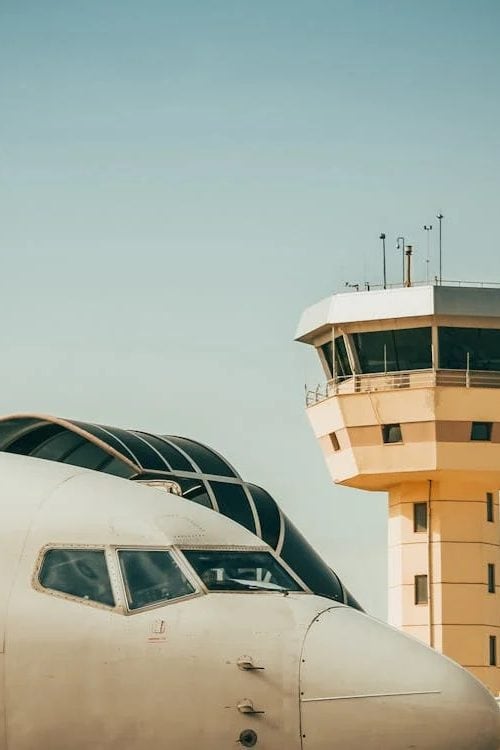The jet fuel price in late June 2023 was around $2.25 per gallon. This is down significantly from the highs of over $4 per gallon seen in early 2022. The war in Ukraine sent prices rising sharply at this time. This effect has now stabilised, and prices have returned to pre-invasion levels. However, as usual throughout the past decades, the industry cannot rely on prices continuing to drop.
Oil prices peaking after the invasion
The start of the war in Ukraine caused a big rise in oil – and jet fuel – prices. This was a major setback for the aviation industry, coming just as travel volumes were seeing good recovery from the pandemic.
The invasion in early 2022 sent the price of oil to a 14-year high (according to reporting by the Financial Times) – as high as $139 per barrel. This was up hugely from just two years before. The COVID-19 pandemic sent prices falling to a historic low of under $10 per barrel in April 2020. This stabilised throughout the rest of the year at between $20 and $30 per barrel.
Jet fuel prices are, of course, closely related to crude oil prices. There can be differences due to stocks and demand for fuel, and from trading in futures contracts, but they generally move in the same way. In March 2022, jet fuel prices were averaging $3.40 per gallon, reaching a peak in June 2022 of $4.12 per gallon. Two years before, prices were down to around $0.61 per gallon.
Prices falling through 2022
The recent peak of oil and jet fuel prices came during the first months of the invasion. By the middle of 2022, prices had begun to fall, but were still up from 2021 levels. In December 2022, prices averaged $2.90 per gallon (up from $2.10 during the previous December).
More sharp rises for airlines came at the start of 2023. These were not caused by the continuing war in Ukraine (2022 showed this was stabilising), but by other factors. A dramatic rise in flight activity in China as COVID-19 restrictions were finally lifted forced demand up quickly. At the same time, outages in US refineries at the start of the year reduced supply. Prices surged in January 2023 to an average of $3.54 per gallon, but dropped back in February to $2.79.
Heading back to “normal” in 2023?
Well over a year into the war, oil and jet fuel prices are heading back down. They are not down to the lows seen during the pandemic, but the pressure is definitely easing. As of June 23th 2023, the jet fuel price was $2.25 per gallon (with a corresponding crude oil price of $73.85 per barrel). This is now back to pre-invasion prices. In January 2022, the average price was $2.45 per gallon.
The problems in Ukraine, of course, are continuing. The situation is more known, however, which will help stabilise prices. Other factors are also having an influence. Sanctions and changing relationships with Iran could boost supply. Furthermore, forecasts are that economies (and travel) will slow in the coming months which should lower demand for oil and fuel.
As we have seen many times (not just with the pandemic and the war in Ukraine, but with countless other events as well), the future direction is far from certain. An escalation or expansion of the problems in Ukraine could send prices rising, as could any number of other scenarios.
Hedging fuel prices
Volatile oil and jet fuel prices are not new – this has been happening for a long time. As such the industry has long adapted with advance purchasing and price hedging common. This provides certainty and stability for costs – very important when fuel can make up around 35% of operating cost for many companies.
Different airlines and other operators will hedge prices to a different extent, meaning not everyone is affected the same. Of course, as fuel prices decrease operators can be caught out the other way by paying prices that are too high.
There was some interesting analysis of hedging levels published by the Financial Times in early 2022 (as the Ukraine troubles began). It showed the varied position amongst major airlines.
At the top end in Europe, Ryanair was hedging 80% of its expected 2022 fuel requirement (at $65 per barrel). Lufthansa was 65% hedged, and IAG (the owner of British Airways and Iberia) was 60% hedged. At the other end of the scale, Wizz Air was not hedging prices at all, leaving it very exposed to the increases. As a result, its share price fell around 50% when fuel prices surged. Large airlines in the US have generally moved away from hedging over the years, but it still happens.
Final Thoughts
Oil, and jet fuel prices have been volatile for decades. Airlines and aircraft operators are used to this, and use hedging techniques to introduce more stability. Nevertheless, rapid rises that result from sudden events can be painful. The war in Ukraine saw the latest of these in 2022 (but with peak prices lower than the last major spikes in 2008). Prices have since dropped back from this peak with increased supply and a stable outlook. Where they go next, of course, is uncertain.
Sources:
Financial Times: https://www.ft.com/content/2bbb3a7d-00e2-4043-b85a-593eb116a9fe
Reuters (January 2023): https://www.reuters.com/business/aerospace-defense/jet-fuel-prices-up-demand-jumps-refinery-outages-limit-supply-2023-01-27/
Trading economics (crude oil prices): https://tradingeconomics.com/commodity/crude-oil
Jet fuel price – Index Mundi / US Energy Information Administration: https://www.indexmundi.com/commodities/?commodity=jet-fuel&months=60
US EIA: https://www.eia.gov/dnav/pet/hist/eer_epjk_pf4_rgc_dpgD.htm
CONTACT OUR TEAM TODAY
If you are struggling with flight support or any of its complexities, feel free to contact our team today for more information.
Aviation News
Aviation Guides
- What is Sustainable Aviation Fuel?
- A Short Guide to FBO’s – the Dos and Dont’s
- Current Risks to Aviation
- How Air Cargo is Revolutionising the Global Economy
- The Cost To Operate A Private Jet
- Infrastructure For Sustainable Aviation Fuel
- Why There Is A Need To Improve Aviation Industry
- Emergency Flight Charter
- Diplomatic Flight Operations




